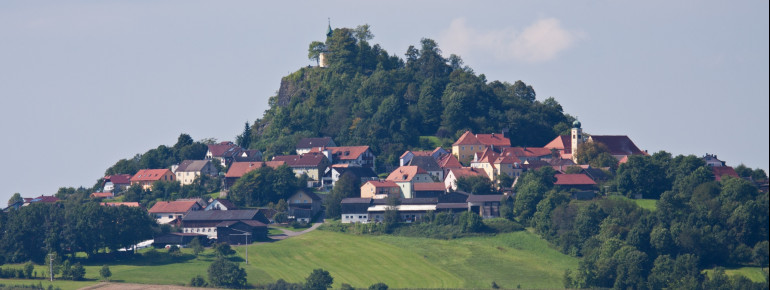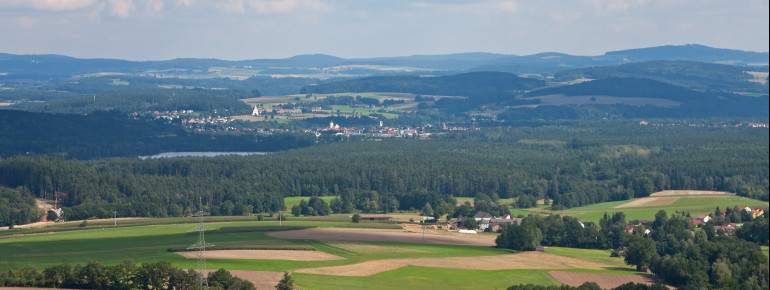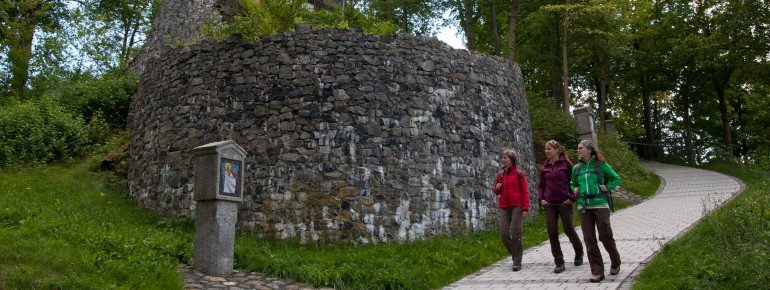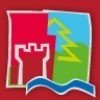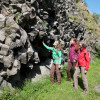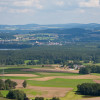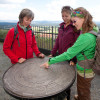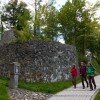Contents
Description
The Parkstein Volcanic Experience consists of four sightseeing elements: a museum, the Hoher Parkstein basalt cone, a geological trail and the Parkstein rock cellars.
Volcano Museum:
In the museum, the history of the volcano's formation as well as the local history and life at the basalt cone are presented on three floors. The permanent exhibition contains numerous films and displays. The highlight, however, is the volcanic chimney. It extends over all three floors and simulates a volcanic eruption before every full hour. An early warning system even informs visitors in good time about the impending eruption.
The information boards are in German, English and Czech. Visitors with disabilities can move around the Volcano Museum completely barrier-free. If you would like to take a book, minerals or gift items with you, you can buy them in the museum shop. Between so much knowledge, a short break is often necessary - you can treat yourself to this in the coffee corner.
Basalt cone:
The volcano itself lies in the bay of the Weiden Basin. Today, there is a small church on the summit of the Hoher Parkstein. Since 2013 it has been one of the "100 most beautiful geotopes in Bavaria". Geologically, the volcano consists of basalt and Schlotbrekzie. In summer, theatre performances and community festivals are regularly held at the foot of the Hoher Parkstein.
Even today, the crystalline shape of the basalt wall, which has pentagonal and hexagonal columns, is fascinating. This is best seen from the car park at the foot of the basalt wall. The unique formation was created by cooling. It was then exposed by erosion and a former quarry. Also worth seeing is the Lourdes Grotto, which can be reached from the car park. It was carved into the rock around 1900 and houses a statue of the Virgin Mary.
The mountain church "St. Marien zu den 14 Nothelfern" is enthroned on the summit of the volcano. It was built in 1852 as a place of pilgrimage and was used as an air guard base during the Second World War. Today, May devotions, Stations of the Cross and weddings are held here. Inside the church, there is an altarpiece of the 14 helpers and a statue of the Virgin Mary, which was salvaged from a chapel in the village during a fire. When you get to the top, you should of course admire the unique view. From the resting benches you have a great panoramic view over the Upper Palatinate Forest.
Geopath:
The geological trail leads you to the top of the basalt cone. Along the way, five stations give you an understanding of the 500 million year history of the Upper Palatinate rocks in the Northern Upper Palatinate Forest Nature Park.
The individual stations of the geological trail:
- The Variscan Mountains
- Magma from the depths
- Minerals and crystals
- "Underground" in the Upper Palatinate
- The Franconian line and the broken Upper Palatinate
Rock cellars:
On the way down from the summit, it is worth visiting the Felsenkeller in the Kapuzinergasse. Here you can see the volcano from the inside. Of particular interest are the rock inclusions, which impressively testify to the forces of the volcanic eruptions. Dark rubble rocks contain several metres of light-coloured rock inclusions. The rock cellars themselves were built to store food and beer.
Historical Information
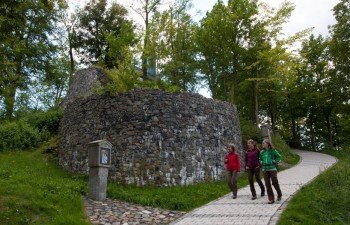
Due to its geological peculiarities and the diverse flora, the Hohe Parkstein was placed under nature conservation as early as 1937. The Hohe Parkstein was formed in the Tertiary period, around 24 million years ago.
On the way to the summit, you pass an old castle. The castle was first mentioned in a document in 1052. It was once inhabited by famous country judges. During the 30 Years' War, the castle withstood the Swedish siege. Today, only the remains of the castle walls are left.
How to get there
By car:
Coming from the A93, take the Weiden West exit. Follow the B470 in the direction of Grafenwöhr and after about eight kilometres turn right in the direction of Parkstein. You will reach the town after about four kilometres and then follow Pressather Straße. Before the Schwand turn-off, turn right into Klostergasse. After driving through this street, you will see the market square on your left. You can park your car here. The museum is located in Schlossgasse.


